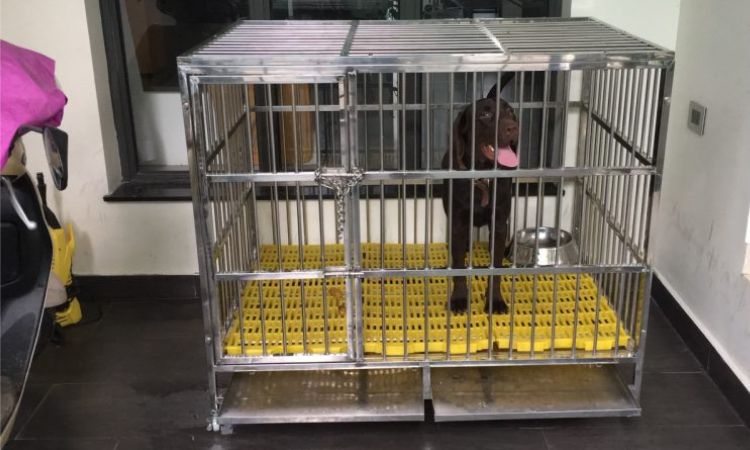Bringing a dog into your life is a joyful commitment but it’s not without cost. Beyond the initial expenses, dog ownership comes with monthly financial responsibilities like food, healthcare, grooming, and everyday supplies. In this guide, we’ll break down the average monthly costs of owning a dog so you can budget wisely and ensure your pup stays happy and healthy.

Key Factors Influencing Monthly Dog Ownership Costs
The monthly cost of owning a dog can vary widely depending on several important factors. Understanding these can help pet owners budget more effectively and make informed decisions:
- Breed and Size of the Dog: Larger breeds typically cost more to care for each month than smaller breeds. They eat more, require larger doses of medications, and often need more durable (and expensive) gear and supplies. Smaller dogs, on the other hand, tend to have lower feeding and medical costs.
- Age and Health of the Dog: Puppies often incur higher monthly expenses due to vaccinations, early training, and frequent vet visits. Senior dogs may also require specialized diets, medications, or more frequent medical checkups. Healthy adult dogs usually have more stable and predictable monthly costs.
- Location and Local Cost of Living: Where you live plays a major role in how much you’ll spend each month. Urban areas with higher living costs tend to have more expensive veterinary services, grooming fees, and pet-related products or services compared to rural or suburban areas.
Owners who opt for premium dog food, routine professional grooming, enrichment activities, and ongoing training classes will naturally face higher monthly costs. Additionally, services like pet insurance, doggy daycare, or regular dog walking add to the total.
Breakdown of Average Monthly Costs
Owning a dog involves a range of ongoing expenses that go far beyond the initial adoption or purchase fee. Here’s a detailed breakdown of average monthly costs across key categories:
1. Food and Treats

Feeding a dog accounts for a significant portion of monthly expenses.
- Dog food prices vary by type and quality: dry kibble ($30–$60), wet food ($40–$100), raw or homemade diets ($100–$300).
- Treats—from training bites to dental chews—typically cost an additional $10–$30 per month depending on frequency and brand.
- Estimated total monthly cost for food and treats ranges from $40 to $330, heavily influenced by the dog’s size and dietary needs.
2. Veterinary Care and Medications

Monthly veterinary expenses are a mix of routine and preventative care.
- Routine checkups, vaccinations, and dental care are essential and typically average out to $30–$70 monthly when annual costs are spread out.
- Preventative treatments (flea, tick, heartworm) can add $10–$30 monthly.
- Emergency care or unexpected illnesses can result in large, sudden costs, so many owners set aside funds or purchase pet insurance.
- Average monthly veterinary budget: $40–$100, excluding emergencies.
3. Grooming

Grooming needs differ greatly based on breed and coat type.
- Professional grooming services may cost $40–$90 per session, done every 4–8 weeks for breeds like Poodles or Shih Tzus.
- At-home grooming supplies (brushes, shampoos, clippers) cost less but require owner time and skill.
- Average monthly grooming expense: $10–$60, depending on grooming frequency and method.
4. Supplies and Equipment
Dogs require a variety of basic items, some of which need regular replacement.
- Daily essentials include collars, leashes, food and water bowls, and beds.
- Toys and enrichment items wear out or get replaced monthly, especially for active or destructive breeds.
- Monthly amortized cost for supplies: $15–$50, factoring in replacements and new additions.
5. Training and Socialization

Proper behavior and social development require consistent attention.
- Training classes—especially during puppyhood—may cost $100–$200 per course, averaged over time.
- Ongoing socialization, such as doggy daycare or park visits, can range from free (self-managed) to $100+ monthly for services.
- Estimated monthly training/socialization budget: $20–$100, based on the dog’s stage and owner’s involvement.
6. Pet Insurance

Insurance helps mitigate unexpected medical costs.
- Monthly premiums range from $20–$70, depending on the plan, breed, and age.
- Pros include financial protection for emergencies and chronic illness. Cons may include exclusions, deductibles, and limits.
- While optional, pet insurance can significantly reduce financial strain, especially for breeds prone to health issues.
Additional Potential Monthly Expenses
Beyond the core necessities, dog ownership often includes additional costs that vary by lifestyle, location, and individual needs. While not always recurring, these expenses can significantly impact your monthly budget:
- Boarding, Pet Sitting, and Dog Walking Services: For busy owners or those who travel, professional care becomes essential.
- Dog walking services typically range from $15–$30 per walk, depending on location and duration.
- Pet sitting or overnight boarding may cost $25–$70 per night, especially in urban areas or during holidays.
- Owners who use these services regularly could spend an additional $50–$300 per month.
- Licensing and Registration Fees: Many cities and counties require dogs to be licensed.
- Fees are generally $10–$20 annually, which averages to under $2 per month, but may be higher for unneutered dogs or in urban areas with strict regulations.
- Some regions also require microchipping, which may add to initial or periodic costs.
- Miscellaneous Costs: These often-overlooked expenses can add up over time.
- Cleaning supplies (pet-safe detergents, waste bags, deodorizers) may cost $5–$15 per month.
- Travel costs, such as crates, airline fees, or pet-friendly accommodations, vary widely but may average out to $10–$30 monthly if travel is frequent.
- Replacement costs for chewed items, damage repairs, or spontaneous purchases can also affect your budget.
Tips to Manage and Reduce Dog Ownership Costs
Caring for a dog doesn’t have to break the bank. With thoughtful planning and a few smart strategies, pet parents can significantly cut down on expenses while still providing a high standard of care. Here are practical ways to make dog ownership more affordable:
- Buy food in bulk or use subscription services: Purchasing large quantities of dog food—especially through warehouse stores or online retailers—can help you save over time. Subscription services often offer discounts and convenient auto-delivery, reducing the chances of last-minute expensive purchases.
- Try DIY grooming and basic training at home: Grooming services can be costly, especially for long-haired breeds. Learning to bathe, brush, trim nails, and clean ears at home can save hundreds annually. Similarly, investing time in basic obedience training yourself, rather than relying solely on professional trainers, can reduce expenses and strengthen the bond between you and your dog.
- Choose preventive care over reactive treatment: Monthly flea, tick, and heartworm preventatives may seem like an added cost, but they’re far less expensive than treating advanced illnesses. Regular wellness exams and vaccinations also help catch issues early—before they become costly emergencies.
A well-chosen pet insurance policy can offset the financial burden of accidents, illnesses, or chronic conditions. To maximize benefits, enroll early—before your dog develops pre-existing conditions—and compare policies to find one that offers the right balance between coverage and monthly premiums.
The monthly cost of dog ownership is a dynamic figure, heavily influenced by factors such as your dog’s size, breed, and health. While you can budget for predictable expenses like food and routine vet care, it’s crucial to be prepared for unexpected costs. Having a clear understanding of these financial commitments is essential for providing a healthy and happy life for your canine companion.






